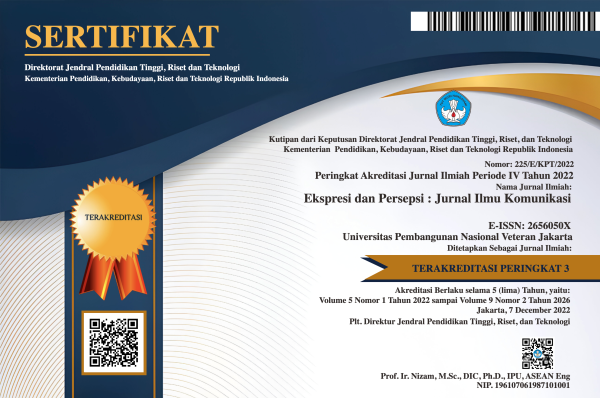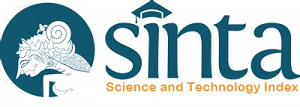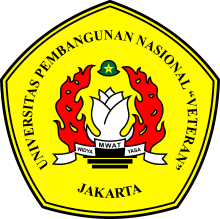PENGARUH MEDIA SOSIAL INSTAGRAM @BPS_STATISTICS TERHADAP EKUITAS MEREK BADAN PUSAT STATISTIK
DOI:
https://doi.org/10.33822/jep.v6i1.4383Keywords:
media sosial, instagram, ekuitas merekAbstract
Perkembangan teknologi dan informasi membuat penggunaan media sosial tidak dapat dipisahkan dalam kehidupan masyarakat sehari-hari. Di Indonesia, instansi pemerintahan di tingkat pusat dan tingkat daerah sudah secara perlahan mulai memanfaatkan media sosial Instagram sebagai sarana komunikasi publik. Pemanfaatan Instagram dinilai dapat menjangkau masyarakat secara lebih dekat dan dapat mengoptimalkan keterlibatan publik yang akhirnya meningkatkan ekuitas merek institusi pemerintah. Penelitian ini bertujuan untuk melihat pengaruh penggunaan media sosial Instagram terhadap ekuitas merek yang terdiri dari dimensi-dimensi brand awareness, brand association, perceived quality, dan brand loyalty Badan Pusat Statistik. Penelitian ini merupakan penelitian eksplanatori, dengan menggunakan pendekatan kuantitatif dan metode survei. Teknik pengambilan sampel pada penelitian ini dilakukan secara non-probability sampling dengan teknik convenience pada followers media sosial Instagram @bps_statistics. Kuesioner menjadi alat instrumen utama dalam pengumpulan data dengan skala Likert 1-5 dalam bentuk google form. Teknik analisis menggunakan analisis regresi linear sederhana dengan menggunakan SmartPLS. Hasil penelitian menunjukkan bahwa media sosial Instagram @bps_statistics berpengaruh positif dan signifikan terhadap dimensi-dimensi ekuitas merek, yaitu brand awareness, brand association, perceived quality, dan brand loyalty.
References
Aaker, D. A., & Equity, M. B. (1991). Capitalizing on the Value of a Brand Name. New York, 28(1), 35–37.
Alam, M. S., & Khan, B. M. (2015). Impact of Social Media on Brand Equity: a Literature Analysis. AIMA Journal of Management & Research, 9(4), 974–497.
Allifiansyah, S. (2017). Ketika Politik Begitu Menghibur (Studi Politainment dalam Perspektif Ekologi Media di Industri Pertelevisian Indonesia).
Alshawaf, E., & Wen, L. (2015). Understanding digital reputation on Instagram: A case study of social media mavens. Proceedings of the 2nd European Conference on Social Media ECSM, 19–27.
Arman, A. A., & Sidik, A. P. (2019). Measurement of Engagement Rate in Instagram (Case Study: Instagram Indonesian Government Ministry and Institutions). Proceeding - 2019 International Conference on ICT for Smart Society: Innovation and Transformation Toward Smart Region, ICISS 2019, 1–6. https://doi.org/10.1109/ICISS48059.2019.8969826
Baruah, T. D. (2012). Effectiveness of Social Media as a tool of communication and its potential for technology enabled connections: A micro-level study. International Journal of Scientific and Research Publications, 2(5), 1–10. https://doi.org/ISSN 2250-3153
Bertot, J. C., Jaeger, P., Munson, S., & Glaisyer, T. (2010). Engaging the Public in Open Government: Social Media Technology and Policy for Government Transparency. Federal Register, 1–18. http://www.tmsp.umd.edu/TMSPreports_files/6.IEEE-Computer-TMSP-Government-Bertot-100817pdf.pdf
Bruhn, M., Schoenmueller, V., & Schäfer, D. B. (2012). Are social media replacing traditional media in terms of brand equity creation? Management Research Review, 35(9), 770–790. https://doi.org/10.1108/01409171211255948
Chin, W. W. (1998). The partial least squares approach to structural equation modeling. Modern Methods for Business Research, 295(2), 295–336.
de Wet, G. (2019). To evaluate how brands use social media in building brand equity. The IIE.
Dixon, B. E. (2010). Towards E-Government 2.0. Public Administration & Management, 15, 418–454. https://scholarworks.iupui.edu/bitstream/handle/1805/4334/Dixon-2010-towards.pdf?sequence=1&isAllowed=y
Ebrahim, R. S. (2020). The Role of Trust in Understanding the Impact of Social Media Marketing on Brand Equity and Brand Loyalty. Journal of Relationship Marketing, 19(4), 287–308. https://doi.org/10.1080/15332667.2019.1705742
Godey, B., Manthiou, A., Pederzoli, D., Rokka, J., Aiello, G., Donvito, R., & Singh, R. (2016). Social media marketing efforts of luxury brands: Influence on brand equity and consumer behavior. Journal of Business Research, 69(12), 5833–5841. https://doi.org/10.1016/j.jbusres.2016.04.181
Graham, M., & Avery, E. J. (2013). Government public relations and social media: An analysis of the perceptions and trends of social media use at the local government level. Public Relations Journal, 7(4), 1–21.
Grunig, J. E., & Grunig, L. A. (1992). Models of public relations and communication. Excellence in Public Relations and Communication Management, 1992, 285–325.
Gruzd, A., Lannigan, J., & Quigley, K. (2018). Examining government cross-platform engagement in social media: Instagram vs Twitter and the big lift project. Government Information Quarterly, 35(4), 579–587. https://doi.org/10.1016/j.giq.2018.09.005
Hrdinová, J., Helbig, N., & Peters, C. (2010). Designing social media policy for government: Eight essential elements. Center, 1–19. http://www.ctg.albany.edu/publications/guides/social_media_policy/social_media_policy.pdf
Keller, K. L. (1993). Conceptualizing, measuring, and managing customer-based brand equity. Journal of Marketing, 57(1), 1–22.
Khansa, S. D., & Putri, K. Y. S. (2022). Pengaruh Sosial Media Tiktok Terhadap Gaya Hidup Remaja. Ekspresi Dan Persepsi : Jurnal Ilmu Komunikasi, 5(1), 133. https://doi.org/10.33822/jep.v5i1.3939
Kim, A. J., & Ko, E. (2012). Do social media marketing activities enhance customer equity? An empirical study of luxury fashion brand. Journal of Business Research, 65(10), 1480–1486. https://doi.org/10.1016/j.jbusres.2011.10.014
Koivulehto, E. I. (2017). Do social media marketing activities enhance customer equity? A case study of fast-fashion brand Zara.
Latan, H., & Ghozali, I. (2012). Partial Least Square: Konsep, Teknik, dan Aplikasi SmartPLS 2.0 M3. Semarang: Badan Penerbit Universitas Diponegoro.
Lim, J.-S., Pham, P., & Heinrichs, J. H. (2020). Impact of social media activity outcomes on brand equity. Journal of Product & Brand Management, 29(7), 927–937. https://doi.org/10.1108/JPBM-03-2019-2298
Nugraha, A. R., Sjoraida, D. F., Erdinaya, L. K., & Komariah, K. (2020). Komunikasi humas pemerintahan kabupaten/kota di Jawa Barat melalui media digital Instagram. Jurnal Kajian Komunikasi, 8(2), 221. https://doi.org/10.24198/jkk.v8i2.26407
Quan-Haase, A., & Sloan, L. (2017). Introduction to the handbook of social media research methods: Goals, challenges and innovations. The SAGE Handbook of Social Media Research Methods, 1, 1–9.
Rayi, M. (2021). Engagement Rate: Apa Itu dan 4 Cara Menghitungnya. https://meson-digital.com/blog/engagement-rate-adalah/
Rohimah, A., & Hakim, L. (2021). Ekologi Media: Penguatan Ekuitas Industri Pariwisata Melalui Media Sosial Marketing. Jurnal Ilmu Komunikasi, 5(1), 99–118. https://doi.org/10.15575/cjik.v5i1.12010
Russmann, U., & Svensson, J. (2016). Studying organizations on instagram. Information (Switzerland), 7(4), 1–12. https://doi.org/10.3390/info7040058
Schill, D. (2012). The visual image and the political image: A review of visual communication research in the field of political communication. Review of Communication, 12(2), 118–142. https://doi.org/10.1080/15358593.2011.653504
Schivinski, B., & Dabrowski, D. (2015). The impact of brand communication on brand equity through Facebook. Journal of Research in Interactive Marketing, 9(1), 31–53. https://doi.org/10.1108/JRIM-02-2014-0007
Sekaran, U., & Bougie, R. (2016). Research methods for business.
Setiawati, C. I., & Pratiwi, P. M. (2015). Conceptual model of citizen’s intention associated to e-government and internet behavior: Why do Bandung citizens follow the Mayor’s social media? 2015 3rd International Conference on Information and Communication Technology, ICoICT 2015, 336–341. https://doi.org/10.1109/ICoICT.2015.7231447
Singarimbun, M., & Effendi, S. (2019). Metode penelitian survai.
Solis, B. (2010). Engage: The complete guide for brands and businesses to build, cultivate, and measure success in the new web. John Wiley & Sons.
Sugiyono, D. (2013). Metode penelitian pendidikan pendekatan kuantitatif, kualitatif dan R&D.
Suryadharma, B., & Susanto, T. D. (2017). Faktor Penerimaan Media Sosial Instansi Pemerintah di Indonesia. Information Technology, 2, 1–10. http://ejurnal.itats.ac.id/index.php/integer/article/view/174
Ting, H., Ming, W. W. P., de Run, E. C., & Choo, S. L. Y. (2015). Beliefs about the use of Instagram: An exploratory study. International Journal of Business and Innovation, 2(2), 15–31.
Triana, D., Suryana, A., Supriadi, D., Komunikasi, F. I., Padjadjaran, U., & Statistik, B. P. (2022). Pengaruh Corporate Branding Badan Pusat Statistik. 5(1), 122–132.
Valerio, G., Herrera-Murillo, D. J., Villanueva-Puente, F., Herrera-Murillo, N., & del Carmen Rodríguez-Martínez, M. (2015). The relationship between post formats and digital engagement: a study of the Facebook pages of Mexican universities. International Journal of Educational Technology in Higher Education, 12(1), 50–63.
We Are Social. (2021). Digital 2021. Global Digital Insights, 103.
West, R., & Turner, L. (2007). Communication theory. Analysis and Application. Singapore: McGraw Hill Companies.
Yi, M., Oh, S. G., & Kim, S. (2013). Comparison of social media use for the U.S. and the Korean governments. Government Information Quarterly, 30(3), 310–317. https://doi.org/10.1016/j.giq.2013.01.004
Downloads
Additional Files
Published
Issue
Section
License
Copyright (c) 2023 Yuniar Eka Putri, Funny Mustikasari Elita, Ilham Gemiharto

This work is licensed under a Creative Commons Attribution-NonCommercial 4.0 International License.














